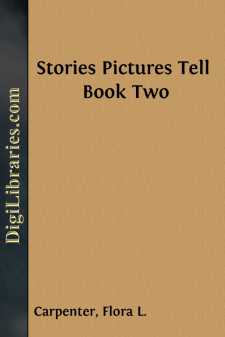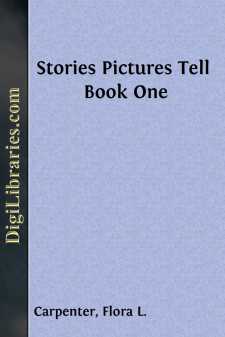Categories
- Antiques & Collectibles 13
- Architecture 36
- Art 48
- Bibles 22
- Biography & Autobiography 813
- Body, Mind & Spirit 142
- Business & Economics 28
- Children's Books 17
- Children's Fiction 14
- Computers 4
- Cooking 94
- Crafts & Hobbies 4
- Drama 346
- Education 46
- Family & Relationships 57
- Fiction 11829
- Games 19
- Gardening 17
- Health & Fitness 34
- History 1377
- House & Home 1
- Humor 147
- Juvenile Fiction 1873
- Juvenile Nonfiction 202
- Language Arts & Disciplines 88
- Law 16
- Literary Collections 686
- Literary Criticism 179
- Mathematics 13
- Medical 41
- Music 40
- Nature 179
- Non-Classifiable 1768
- Performing Arts 7
- Periodicals 1453
- Philosophy 64
- Photography 2
- Poetry 896
- Political Science 203
- Psychology 42
- Reference 154
- Religion 513
- Science 126
- Self-Help 84
- Social Science 81
- Sports & Recreation 34
- Study Aids 3
- Technology & Engineering 59
- Transportation 23
- Travel 463
- True Crime 29
Stories Pictures Tell Book Two
Description:
Excerpt
SHOEING THE BAY MARE
Original Picture: National Gallery, London,
England.
Artist: Sir Edwin Landseer (lÃÆnd´´sÃâr).
Birthplace: London, England.
Dates: Born, 1802; died, 1873.
Questions to arouse interest. What is the man in this picture doing? How many have watched a blacksmith shoe a horse? Why does he wear an apron made of leather? From what do the sparks fly? What has the blacksmith in his hand? Why do you suppose this horse wears no halter? What other animals do you see in this picture? Which has the larger ears, the donkey or the horse? Which seems to have the softer coat? Which can run the faster? What do you see on the donkey's back? What kind of dog is that in the picture? Why do you suppose the hound is so interested in what the blacksmith is doing? What else can you see in the picture? What makes you think the man is fond of animals? Where is the bird? Why do you like this picture?
The story of the picture. Here in a building that once may have been a home, we see an old-fashioned country blacksmith shop. The wide door has been made in two parts so that the upper part can be swung open to let in the sunlight. The lower part of the doorway remains closed and is just high enough to keep the horse and donkey shut in. But the dog could easily jump over it should he become frightened by the flying sparks of fire.
The smith is trying a shoe on the hind foot of the beautiful horse, but neither the man nor the horse seems quite satisfied with it. The horse has an anxious look in her intelligent eyes as she turns her head to watch the smith. Though she knows he will do the work carefully she cannot help being a little nervous about it. The dog and the donkey are also very much interested in what the smith is doing, though the dog seems ready to run at any moment. Behind the dog we see the blacksmith's anvil on which he hammers the shoe into shape. Every time the hammer strikes the red-hot iron, burning sparks fly in all directions and the blacksmith wears a leather apron, to keep them from burning holes in his clothes.
On the ground beside the blacksmith is a box in which are the tools the smith must use. It has a handle so that the smith may carry it with him and place it within reach when he is fitting the shoe.
Years ago, when the artist painted this picture, a blacksmith had to make each shoe by hand from a bar of iron. Now horseshoes are made rapidly by machinery and the blacksmith gets them from the factory. They are made in all shapes and sizes and the smith will try several shoes until he finds one that fits the horse's hoof. If it needs to be shaped a little he must heat it red hot before he can bend it. He puts it into the great bed of red-hot coals in his forge, and then blows upon the coals with his bellows to make the fire hotter. His heavy iron tongs are used to take the red-hot shoe from the coals and to hold it upon the anvil while he pounds it into shape. Next he drops it into cold water until it is cool enough to try on. The smith must be a strong man to do his work well, and in this picture our attention is drawn to the great muscles on his arms and the firm strength of his large hands....




